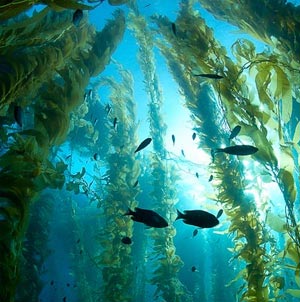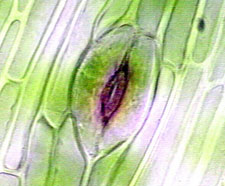Plant Evolution
Importance of plants

Almost all organisms on Earth depend on the photosynthetic ability of plants. Plants capture and store the energy from sunlight in various compounds. Other organisms recieves these energy when they consume the plants. The energy most organisms need comes directly or indirectly from plants. Plants produce the oxygen we breath, the food we eat, and even the paper we use to print this material. Plants are also a source of many medicines that help to keep us healthy. Without plants, life as we know it would not exist.
Plants dominate the land and many bodies of water, they exhibit tremendous diversity. Some plants can be less than 1 mm in width, and others can grow more than 100 m (328 ft) in height. There are more than 270,000 known species of plants with new species continuously being discovered in Tropical Rain Forests. Some plants complete their life cycles in a few weeks, while others live over 5,000 years.
Plants invasion of land

A widely held view of plant evolution is that the ancestors of land plants were primitive algae that made their way from the ocean to freshwater, where they inhabited alternately wet-and-dry shoreline environments, eventually giving rise to such later forms as the mosses and ferns. From some remote fern ancestor, in turn, arose the seed plants.
So in retrospect it is possible to believe that the first generation of plants were originally confined to the sea. The movement to land required them to make several adaptations to survive this new and strange environment.
Land plants had to develop new structures to replace the obvious advantages provided by an aquatic environment. The first land plants had to be able to survive scarcity of water and the changes of climate.
Plants adapting to land

By moving to land, plants had to develop a waxy surface cuticle to reduce unnecessary water loss. These cuticles (tiny openings on plant surfaces) were known as a Stomata, which were mostly found on leaves. These cuticles balanced the needs of a plants for reducing water loss and maintaining CO2 (Carbon dioxide) intake.
By being in an open environment rather than the dense water, plants had to develop a support against gravity, which meant that cell walls and stems had to be strengthened. Many deposit lignin, the main component of wood, were permitted to increase size and branching.
By moving to land, nutrients and water had to be extracted from the soil rather than from the surrounding aquatic medium, and so plants had to develop roots. These roots extracted nutrients and water from the soil, and transported it via vessels up to the rest of the plant (see How Plants Work?).
With increasing adaptation to drier terrestrial habitats the reproduction process of plants had to change as well. As a result the Haploid Phase (the gametophyte) of the plant life cycle diminished and the Diploid Phase (the sprorophyte) became dominant.
The Haploid Phase required a moist environment such as water for free-swimming sperm to reach the female's egg for reproduction. However the adaptation to dry environments led to the elimination of aquatic gametes (swimming sperms).

The gametophyte phase still dominates in the most primitive of plants, like the mosses and their allies.
The Diploid Phase was more suited to land plants due to the dry terrestrial habitats. These plants developed structures, such as spores and seeds, that helped protect reproductive cells from drying out.
The spore contained a Haploid Reproductive Cell surrounded by a hard outer wall. Spores allowed for the widespread dispersal of plant species.
Eventually, most plants developed seeds (a seed is an embryo surrounded by a protective coat). Some seeds also contained Endosperms (a tissue that provided nourishment for the developing embryo). Seeds are more effective at dispersal than spores are.
The sporophyte phase dominates the life cycles of higher plants such as gymnosperms and flowering plants.